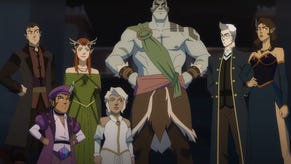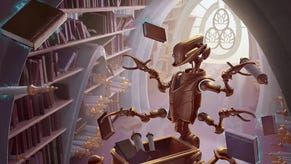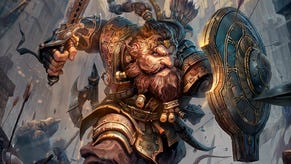D&D’s return to Planescape could provide a great new purpose for the RPG’s moral alignment system
Wheel of fortune.
Besides the reveal that the next version of Dungeons & Dragons might remove editions altogether, the announcement from last week’s Wizards Presents 2022 event that had me most excited was that D&D would be returning to Planescape.
For the uninitiated, Planescape is a setting that was created for the very first edition of D&D and explored the concept of various planes existing within the fantasy roleplaying game’s universe. Planes – worlds within the D&D universe that are governed by radically different laws and attributes - had already been introduced in books such as Advanced Dungeons & Dragons’ Dungeon Master’s Guide, but the concept was so strong that the community demanded a complete campaign setting.
That campaign setting was Planescape, a world that served as a crossroad between the different planes of Dungeons & Dragons – a world within worlds, if you will. Though the setting does technically touch on all the known planes, at that point in D&D’s history at least, it’s the city of Sigil that’s really the focus of Planescape. Consider Sigil to be the centre of a centre. The city sits atop a spire, one that is located within an enormous wheel that connects all of the different planes together. The hole within a gigantic doughnut or multiverse bagel.
Sigil can only be entered via the portals from the various planes and serves as a cosmological hub of sorts, providing a home to the many different beings that populate each plane. This is what makes Sigil such a fascinating setting; it's not just a city sat in the middle of a giant floating wheel, it’s a melting pot for all these dramatically different ideas to clash together in.
The Outer Planes’ approach to moral alignments is so strange that it completely sidesteps the issues the system otherwise suffers from.
Leaving out all the bizarre aspects of the other planes - such as the Inner Planes, which are each entirely governed by the laws of water, fire, air and other elemental aspects – it’s the Outer Planes that provide the most potential for interesting worldbuilding and interactions. Rather than environmental laws, like gravity or fire, governing them, the Outer Planes are dictated by the laws of morality.
D&D’s moral alignment system has become less important in the tabletop RPG since the release of its first edition - and for good reason, considering how, one, boring characters trapped into specific alignments can be and, two, the problematic implications of having playable species locked into certain moral alignments. However, that doesn’t mean that the entire concept should be tossed aside wholesale.

The Outer Planes’ approach to moral alignments is so strange that it completely sidesteps the issues the system otherwise suffers from. Having entire worlds, governed by strict moral alignments, all mixing with one another in a single city is such a weird idea that it avoids falling into the trap of being by-the-numbers or reductive.
Characters from the Prime Material Plane – a place where there’s gravity and everything isn’t constantly on fire – are nuanced and complicated people whose perspective on morality has been shaped by various factors. When you provide scenarios for these characters to encounter people from the Outer Planes, locations like the Abyss - which is governed by the law of chaotic evil – or the lawful neutral Mechanus, that’s when things get really interesting.
Settings based around morality and cosmology provide humans with a useful playground to explore what is good and what is bad.
The 1999 cult-classic PC game Planescape: Torment is an excellent example of how to lean into the unique aspects of the D&D setting. Set in Sigil and several of the planes the city connects to, Planescape: Torment has players interacting with the likes of modrons – creatures that live in Mechanus – and the devils of the Nine Hells of Baator, who each have their own perspectives on morality thanks to the laws that dictate their planes of origin. Which isn't to say that every single devil is on board with being lawful evil or every modron wholeheartedly believes in being lawfully neutral, as previous Planescape releases and adaptations have revealed that things are far from simple in Sigil and beyond.
Tackling the daunting concepts of good and evil within a setting that is entirely built around them is a much better approach to moral alignment than including them as optional elements in character creation or monster manuals. Nowadays, no-one is claiming that Dante’s Inferno provides a useful guide to morality, but that doesn’t mean it isn’t absolutely fascinating. Settings based around morality and cosmology provide humans with a useful playground to explore what is good and what is bad, what drives people to commit certain acts, and whether they should be punished for them, whilst avoiding implementing such black-and-white aspects into the complexities of the real world. Or, at least, as real as Dungeons & Dragons’ Prime Material Plane can be.
The re-introduction of Planescape gives Wizards of the Coast a chance to put the moral alignment system to good use and give DMs and players a compellingly weird place to explore it. Or the publisher will do what it did with Spelljammer this year and release an alright package of books, providing an inoffensive overview and adventure. I know which one I prefer.










